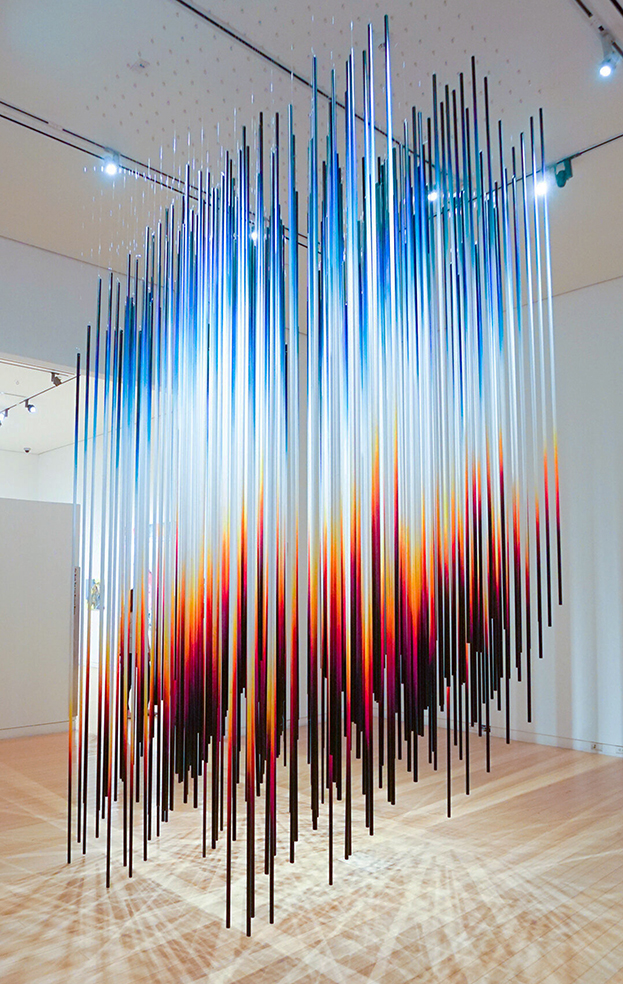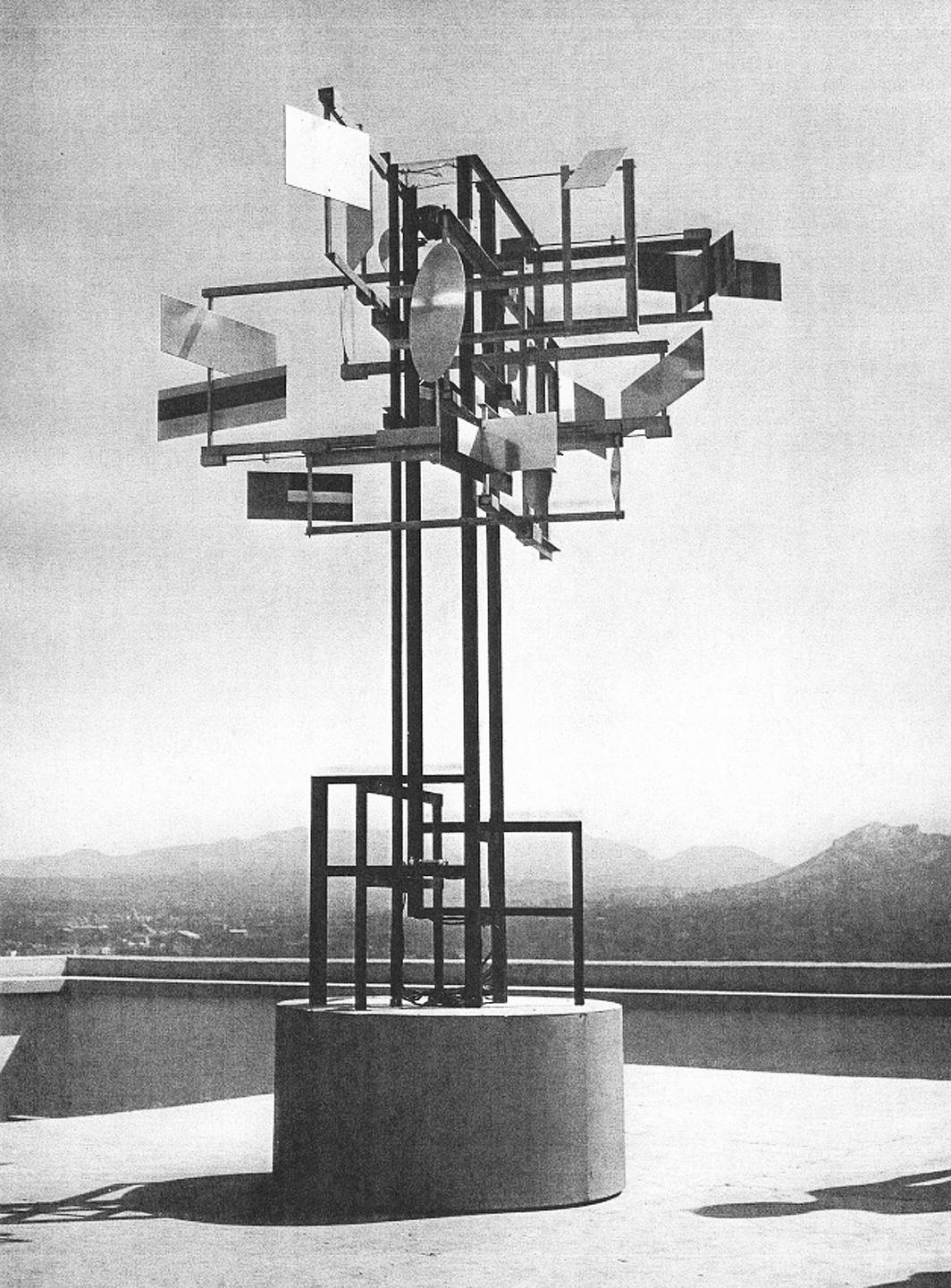ニコラ·シェフェール
Cet intérêt pour le dynamisme artistique a été initié par les cubo-futuristes puis intensifié et solidifié par les artistes constructivistes, tels que Naum Gabo, Anton Pevsner, Laszlo Moholy-Nagy et Ludwig Hirschfeld-Mack, soucieux d’ouvrir les trois statiques. -Forme sculpturale dimensionnelle à une quatrième dimension du temps et du mouvement. Et c’était aussi l’intention de Schöffer. En 1948, il a commencé à explorer la spatio-dynamique, plus tard en 1957 la luminodynamique (en intégrant la lumière, la musique, le film), et depuis 1959 l’élément du temps aboutissant aux travaux cinétiques (chronodynamique). Schöffer cependant, venant bien après, a bénéficié des théories cybernétiques (théories des systèmes de rétroaction principalement basées sur les idées de Norbert Wiener) en ce qu’elles lui suggéraient des processus artistiques en termes d’organisation du système qui le manifestait (par exemple, la causalité circulaire de boucles de rétroaction). Pour Schöffer, cela a permis à la cybernétique d’élucider des relations artistiques complexes à partir de l’œuvre elle-même.




